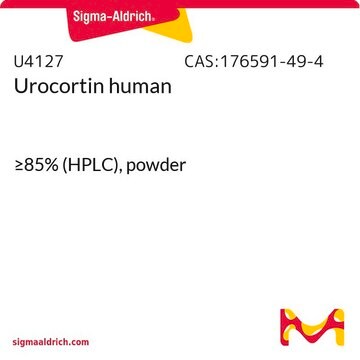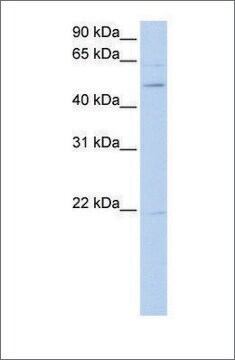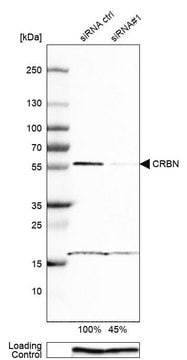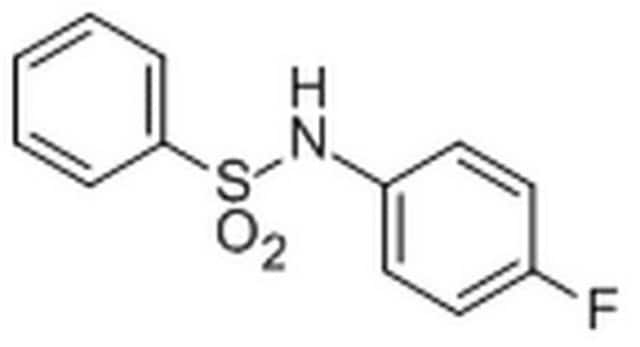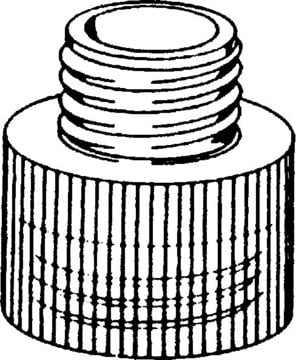Recommended Products
biological source
mouse
Quality Level
Assay
≥97% (HPLC)
form
solid
technique(s)
immunohistochemistry: suitable
UniProt accession no.
storage temp.
−20°C
Gene Information
mouse ... Ucn2(171530)
Related Categories
Amino Acid Sequence
Val-Ile-Leu-Ser-Leu-Asp-Val-Pro-Ile-Gly-Leu-Leu-Arg-Ile-Leu-Leu-Glu-Gln-Ala-Arg-Tyr-Lys-Ala-Ala-Arg-Asn-Gln-Ala-Ala-Thr-Asn-Ala-Gln-Ile-Leu-Ala-His-Val-NH2
Application
Mouse urocortin II can be used for immunohistochemistry.
Biochem/physiol Actions
Urocortin II is a CRF-related neuropeptide having high affinity for CRF2 receptor. It stimulates protein kinase A through CRF2 receptor and increases the contractility in rabbit ventricular myocytes. It also facilitates pro-inflammatory effects in human intestinal cells through corticotropin-releasing hormone receptor 2α.
corticotropin-releasing factor (CRF) peptide
Other Notes
Lyophilized from 0.1% TFA in H2O
Storage Class Code
11 - Combustible Solids
WGK
WGK 3
Flash Point(F)
Not applicable
Flash Point(C)
Not applicable
Personal Protective Equipment
dust mask type N95 (US), Eyeshields, Gloves
Certificates of Analysis (COA)
Search for Certificates of Analysis (COA) by entering the products Lot/Batch Number. Lot and Batch Numbers can be found on a product’s label following the words ‘Lot’ or ‘Batch’.
Already Own This Product?
Find documentation for the products that you have recently purchased in the Document Library.
Alan C Moss et al.
Gut, 56(9), 1210-1217 (2007-04-07)
Urocortin II (UcnII) is a neuropeptide that binds with high affinity to the corticotropin-releasing hormone receptor 2 (CRHR2) in peripheral tissues. UcnII is synthesised in the intestine, but its role in human intestinal inflammation is largely unknown. Responses of human
David P Burns et al.
The Journal of physiology, 596(21), 5175-5197 (2018-08-31)
Impaired ventilatory capacity and diaphragm muscle weakness are prominent features of Duchenne muscular dystrophy, with strong evidence of attendant systemic and muscle inflammation. We performed a 2-week intervention in young wild-type and mdx mice, consisting of either injection of saline
Li-Zhen Yang et al.
Cardiovascular research, 69(2), 402-411 (2006-01-03)
Urocortin II (UcnII), a peptide of the corticotropin-releasing factor (CRF) family, exerts profound actions on the cardiovascular system. Direct effects of UcnII on adult cardiomyocytes have not been evaluated before. Our aim was to characterize functional effects of UcnII on
David P Burns et al.
Experimental physiology, 102(9), 1177-1193 (2017-07-01)
What is the central question of this study? We previously reported impaired upper airway dilator muscle function in the mdx mouse model of Duchenne muscular dystrophy (DMD). Our aim was to assess the effect of blocking interleukin-6 receptor signalling and
Dimitri Tränkner et al.
Cell reports, 29(4), 791-799 (2019-10-24)
Aberrant microglia activity is associated with many neurological and psychiatric disorders, yet our knowledge about the pathological mechanisms is incomplete. Here, we describe a genetically defined microglia sublineage in mice which has the ability to suppress obsessive compulsion and anxiety symptoms. These
Our team of scientists has experience in all areas of research including Life Science, Material Science, Chemical Synthesis, Chromatography, Analytical and many others.
Contact Technical Service